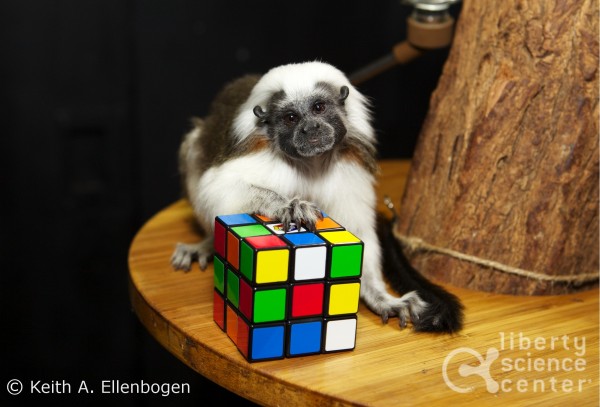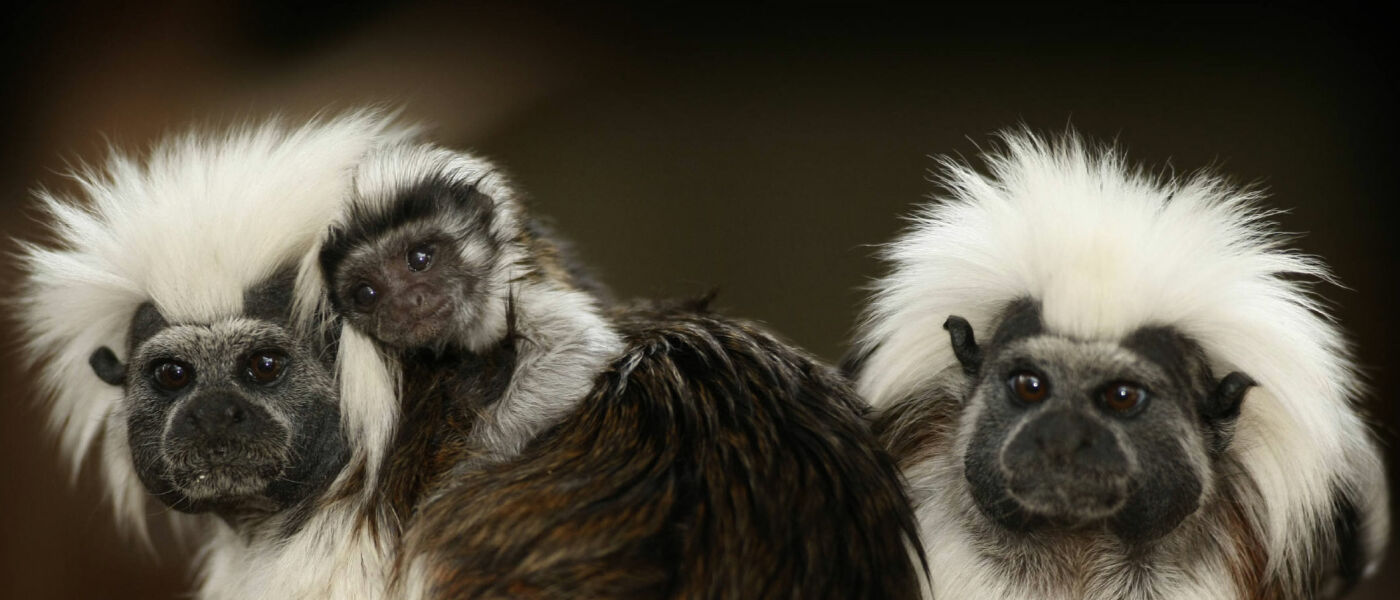Meet our tamarin family

Liberty Science Center was selected by a nationwide conservation program to educate the public about the critically endangered cotton-top tamarins. The family being cared for at LSC is one of many throughout the country that will ensure the health and long-term survival of the species. The mother and father are named Mazzanti and Annie. The juvenile twins are named Sophia and Emilia.

Cotton-top tamarins are found only in a small area of northwestern Colombia. Their habitat is tropical forests, in the lower levels of the forest canopy. Their diet consists of insects, fruits, vegetation, eggs, sap and nectar. They are critically endangered. In fact, the cotton-top tamarin is one of the most endangered monkeys in the world. There are approximately 6,000 left in the wild.

LSC’s cotton-top tamarin family is comprised of a male and female pair, and their twin girls born earlier this year. If you come to visit, you may notice that the adult female does not have a tail. It is not uncommon for cotton-top tamarins to lose their tails due to injury, which fortunately has no impact on their health. This monkey most likely lost hers at a very young age.
The tamarins weigh just under one pound. They can live up to 25 years in captivity, but rarely survive past 13 years in the wild. Although their long tails provide balance while climbing trees, they are not prehensile, and cannot grasp onto objects.

If you visit, you will find the tamarins on our third floor in Eat & Be Eaten. They will live in a custom enclosure where they can enjoy a variety of enrichment activities provided by the Husbandry keepers designed to promote the tamarins’ mental and physical well being. Keepers will work closely with the tamarins every day to provide training, games and puzzles. This enrichment program keeps the monkeys mentally engaged and prevents boredom and bad behavior.

Daily enrichment stimulates behaviors and curiosity that would typically be seen in a natural environment. Types of enrichment include habitat, sensory and social. Some examples visitors might see are:
- climbing structures
- puzzle feeders
- fruit kabobs
- cardboard boxes
- Rubik’s cube
- foraging activities/training sessions
As fellow primates, humans and monkeys are susceptible to many of the same diseases and parasites. Proper handling procedures and only by trained keepers is of utmost importance, therefore, the monkeys will only be handled by the LSC Husbandry staff and LSC’s contracted veterinarian (who has worked with cotton-tops prior to caring for our tamarin family.)
